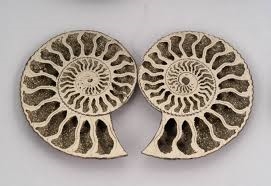 | AMMONITE | Hardness | 4.5-5.5 | | Color | gray to brown | | Origin | -Madagascar | | Transparency | transparent | | |
|
| Ammonites are an extinct group of marine animals of the subclass Ammonoidea in the class Cephalopoda, phylum Mollusca. They are excellent index fossils, and it is often possible to link the rock layer in which they are found to specific geological time periods.
Ammonites' closest living relative is probably not the modern Nautilus (which they outwardly resemble), but rather the subclass Coleoidea (octopus, squid, and cuttlefish).
Their fossil shells usually take the form of planispirals, although there were some helically-spiraled and non-spiraled forms (known as "heteromorphs"). Their name came from their spiral shape as their fossilized shells somewhat resemble tightly-coiled rams' horns. Pliny the Elder (d. 79 A.D. near Pompeii) called fossils of these animals ammonis cornua ("horns of Ammon") because the Egyptian god Ammon (Amun) was typically depicted wearing ram's horns. Often the name of an ammonite genus ends in -ceras, which is Greek (κέρας) for "horn" (for instance, Pleuroceras).
Other fossils, such as many found in Madagascar and Alberta (Canada), display iridescence. These iridescent ammonites are often of gem quality (ammolite) when polished. In no case would this iridescence have been visible during the animal's life; additional shell layers covered it. |
|
|
|